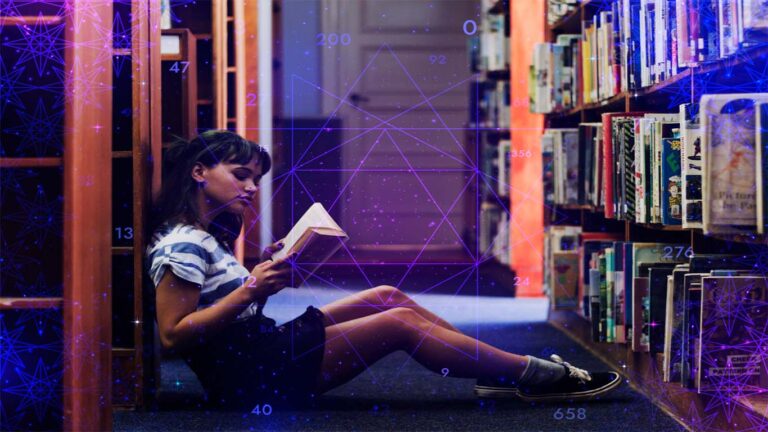
Education
In the past decade, technology has revolutionized nearly every aspect of our lives, and education is no exception. The concept of the “digital classroom” has evolved from simple online learning platforms to immersive, interactive environments that redefine how knowledge is delivered, accessed, and retained. The integration of digital tools in education is not just a trend—it’s a transformation that is reshaping the future of learning globally.
1. The Rise of E-Learning Platforms
The most significant shift in modern education is the rise of e-learning platforms. Online courses, massive open online courses (MOOCs) like Coursera, edX, and Udemy, and virtual classrooms have made it possible for students to learn from anywhere in the world. These platforms offer flexibility, allowing learners to study at their own pace, access a wide range of subjects, and even earn accredited degrees online.
E-learning also breaks down barriers related to geography, cost, and accessibility. Students from remote areas can now access quality education without the need to relocate, and working professionals can upskill without disrupting their careers. The COVID-19 pandemic accelerated this trend, highlighting the importance of digital infrastructure in ensuring educational continuity during global disruptions.
2. The Role of Interactive Technologies
Beyond traditional online courses, interactive technologies are enhancing the learning experience. Tools like virtual reality (VR) and augmented reality (AR) offer immersive educational experiences that were once unimaginable. For example, students can explore historical sites through VR tours or conduct complex science experiments in virtual labs without the risks associated with real-world trials.
Gamification is another powerful tool in digital classrooms. By incorporating game-like elements such as points, leaderboards, and badges, educators can boost student engagement and motivation. This approach has proven effective in both K-12 and higher education settings, making learning fun and interactive while reinforcing key concepts.
3. Personalized Learning Through AI and Data Analytics
Artificial Intelligence (AI) is playing a pivotal role in personalizing education. AI-powered platforms can analyze student performance data to identify strengths, weaknesses, and learning preferences. Based on this analysis, the system can tailor content to meet individual needs, providing customized learning paths that optimize outcomes.
For example, intelligent tutoring systems can adapt lessons in real time, offering additional resources or exercises when a student struggles with a concept. This level of personalization ensures that no student is left behind, catering to diverse learning styles and abilities within the same classroom.
4. The Growing Importance of Digital Literacy
As technology becomes more integrated into education, digital literacy is emerging as a critical skill. Students need to be proficient not only in using digital tools but also in critically evaluating information, understanding online etiquette, and safeguarding their digital privacy.
Educational institutions are increasingly incorporating digital literacy into their curricula, preparing students for the demands of the 21st-century workforce. This includes coding, data analysis, cybersecurity awareness, and the ethical use of technology—all essential competencies in today’s tech-driven world.
5. The Evolution of Collaborative Learning
Technology has transformed the way students collaborate. Cloud-based tools like Google Workspace, Microsoft Teams, and Zoom facilitate real-time communication and teamwork, regardless of location. Group projects, discussions, and peer reviews can now happen seamlessly in digital environments, fostering global connections and diverse perspectives.
Moreover, social media platforms and educational forums allow students to engage with communities beyond their immediate classroom, expanding their networks and learning from a broader range of voices. This shift not only enhances academic collaboration but also prepares students for the collaborative nature of modern workplaces.
6. Challenges and the Need for a Balanced Approach
While the digital classroom offers numerous benefits, it also presents challenges. The digital divide remains a significant issue, with students in underserved regions lacking access to reliable internet and devices. Additionally, overreliance on technology can lead to decreased face-to-face interaction, impacting social skills and emotional development.
Educators face the challenge of maintaining engagement in virtual settings, where distractions are abundant, and student participation can vary. Moreover, the rapid pace of technological change requires continuous professional development for teachers to stay updated with the latest tools and methodologies.
Conclusion
The digital classroom is not just a temporary adaptation—it’s the future of education. Technology is transforming how knowledge is delivered, making learning more accessible, personalized, and engaging. While there are challenges to address, the potential for positive impact is immense.
As we navigate this digital evolution, the goal should be to create a balanced approach that leverages technology’s strengths while preserving the human connection that is at the heart of effective education. The future of learning is digital, dynamic, and limitless, offering opportunities for growth and discovery like never before.
Share this content:







